I have another barn tour to share with you! Unfortunately I had to go all the way to Hawaii for this one, so I hope you appreciate all my hard work basking in the sun and drinking pina coladas. Actually, it poured half the time, but I managed to slip away to visit a therapeutic riding program on the island, the Haku Baldwin Center, in the middle of a rainstorm. Having recently made it through the polar vortex in the Midwest, I was just glad the temp wasn’t in the single digits! I had a lovely visit with their sweet small program and am really excited to share it with you. Note that this is not a comprehensive description, but just the things I think would be most interesting or helpful to readers. I hope you enjoy this as much as I did! (Click the pictures to make them bigger).
Barn Tour: The Haku Baldwin Center
Below is the Haku Baldwin Center in Maui, Hawaii – this photo is from their website, it was not sunny when I visited! They are a great example of a program doing all they can within the limitations they have been given and continuing to improve. The Haku Baldwin Center is a fully operational barn with boarders, riding lessons, a TR program, AAT/AAA, Humane Animal Ed, and a veterans program. With these many activities at the center, the TR team makes a big impact with just two days allocated for TR each week. They are a great example of a program that continues to evolve within the limitations they face as a multi-use center, while staying true to their founder’s vision. In 2017 the center hosted a PATH Intl. Workshop and Certification, and while they are not a PATH Intl. Accredited Center, after this process, many changes and enhancements were made to the program.
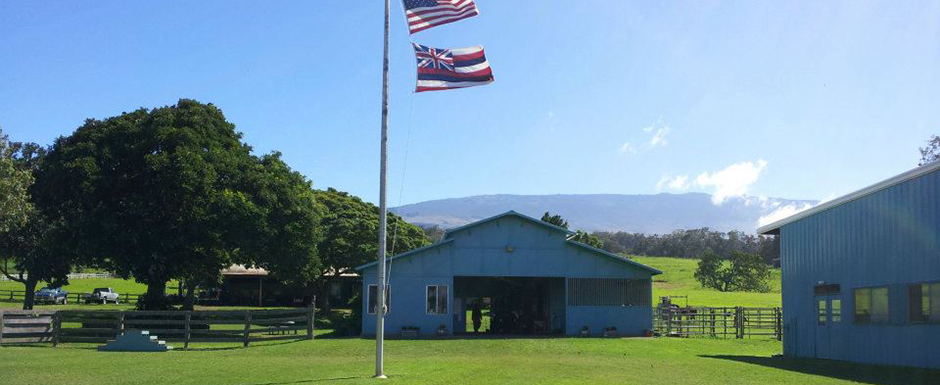
The Lessons Program
The Haku Baldwin Center has about 22 riders, 3-4 therapeutic riding horses, and a good sized wait list. They run therapeutic riding programs 2 days a week for 2 hours each day, and have a veterans program. Their small size is due to the fact that they run out of a boarding and lessons facility and can only use the arena so much.
In those 2 hours they used to run 20 minute private lessons back to back with 2 instructors. Recently they switched to 40 minute group lessons back to back, with 1 instructor teaching and the other getting the next class ready or teaching at the same time. They used to do mostly riding lessons, but recently switched to alternating every week between unmounted and mounted lessons (with exceptions for those who can’t participate in unmounted lessons). That way they can have participants in the arena and others unmounted at the same time, doubling up on lessons – and riders benefit from both types of lessons in different ways – and I imagine it keeps horses happier!
Their program is year round with no sessions, and they implement breaks. Because riders can stay with the program until they turn 18, there is little turnover, resulting in a long wait list. To address this, the team is currently looking at creating seasonal blocks to allow more sets of riders to participate. These blocks will also help with short-term goal setting. I thought this was a neat consideration.
Their program is all free, and has been since the founder (Harriet “Haku” Baldwin) gave her first lesson to a rider with disabilities way back in 1973! They continue in this way because it was Haku’s vision and because they find the kids who can come because it’s free are often the ones who need it the most. I wondered if they had any trouble with attendance (parents valuing the commitment less because they didn’t lose any money if they missed a lesson) and they said they’ve had some, so they have an absentee policy of 6 chances which helped a lot.
Volunteers
Their volunteer system is changing, too. When they had the shorter 20 minute classes, they didn’t assign volunteers to roles but rather let them rotate through on their own and it was easy for someone to jump in when needed or take a break. Now that lessons are 40 minutes, they are scheduling volunteer roles and it’s a bigger deal when one doesn’t show up, or when one is not in a lesson and doesn’t have much to do for 40 minutes.
This is what their lesson assignment board looks like now that they assign volunteers:

Their Horses
They have only a few therapeutic riding horses, 3-4, who only work therapeutic riding lessons 2 days a week (what more, alternating mounted/unmounted), who stay out in pasture, and are also used in able bodied lessons at the barn. They think those are the reasons they have no behavior issues in their horses (and know of at least one horse that they’re sure would develop issues if he had to work daily).
Tack
Their program used to be all bareback, but with the PATH Intl. Certification a while ago they started using saddles. They got these treeless saddles (which I believe are the “Tough-1 Eclipse Treeless Endurance Saddle”) and love them because they are so light even their littlest riders can carry them (such as on unmounted lessons days when they learn to tack up) and they are very comfortable on the horses (their program is only kids, so I’m not sure how they’d work with heavier adults). Has anyone else used these saddles?
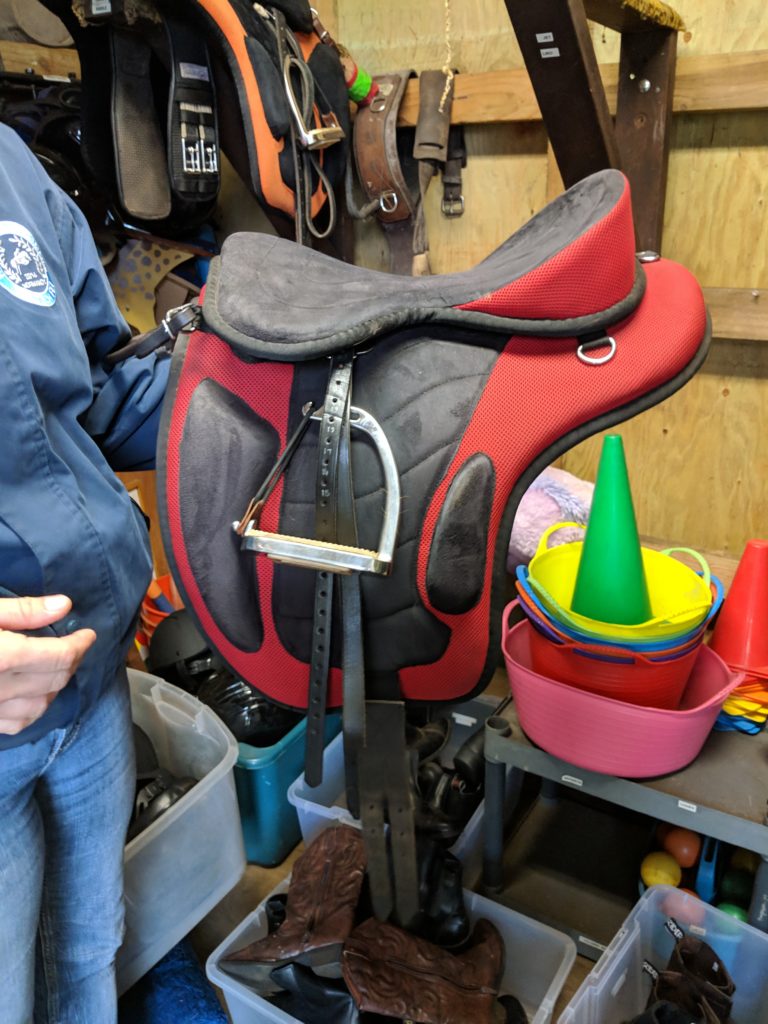
With the use of saddles came stirrups, and with that the need for their riders to have boots. So recently they used Amazon Wishlist to get a bunch of boots the kids can put on before their lesson, when they arrive. The pride that one rider had from being able to put on and zip up his boots all by himself was a sweet surprise, they said.
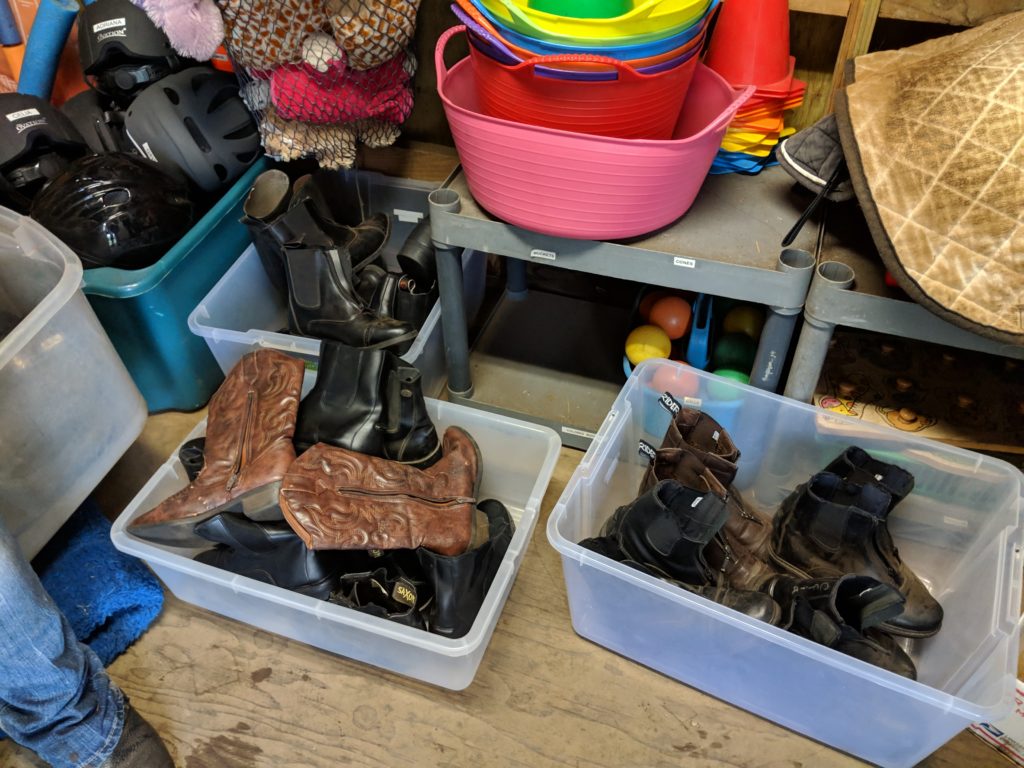
Facilities
They usually mount outside in the grassy area at the mounting block in the corner, which they also use the grass area for riding outdoors almost every lesson (when it’s not a big puddle like the day I visited!).
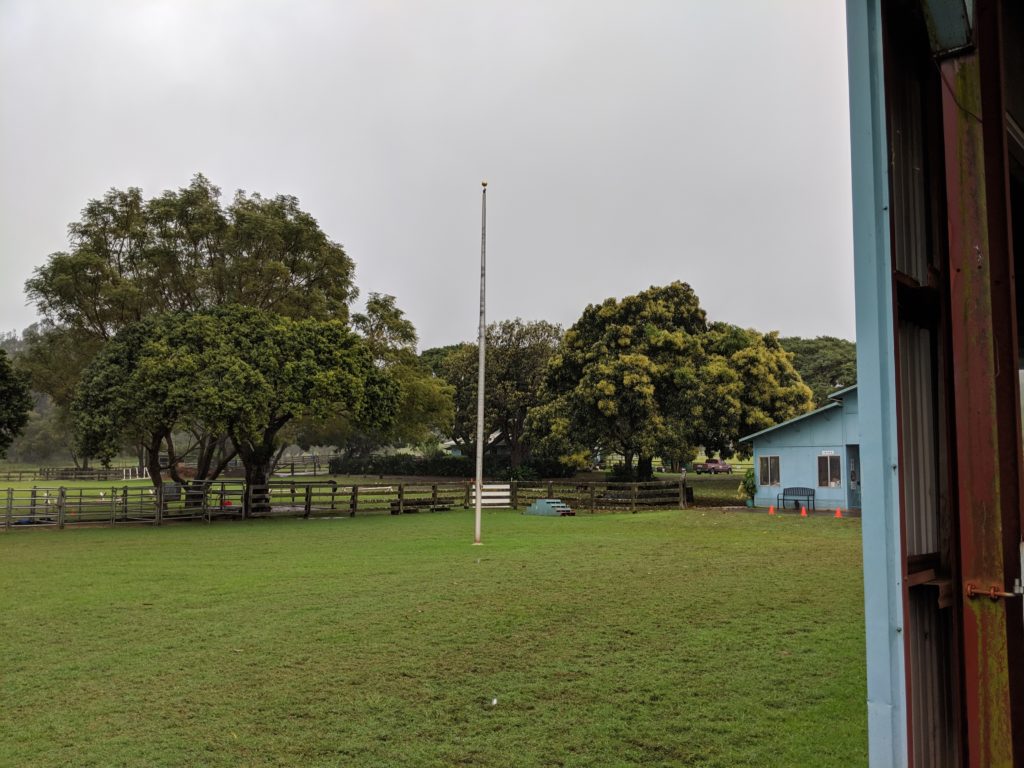
If the rider needs it, they mount at the ramp next to the indoor arena which also has a Sure-Hands lift system that hooks into and slides along a track above the ramp.
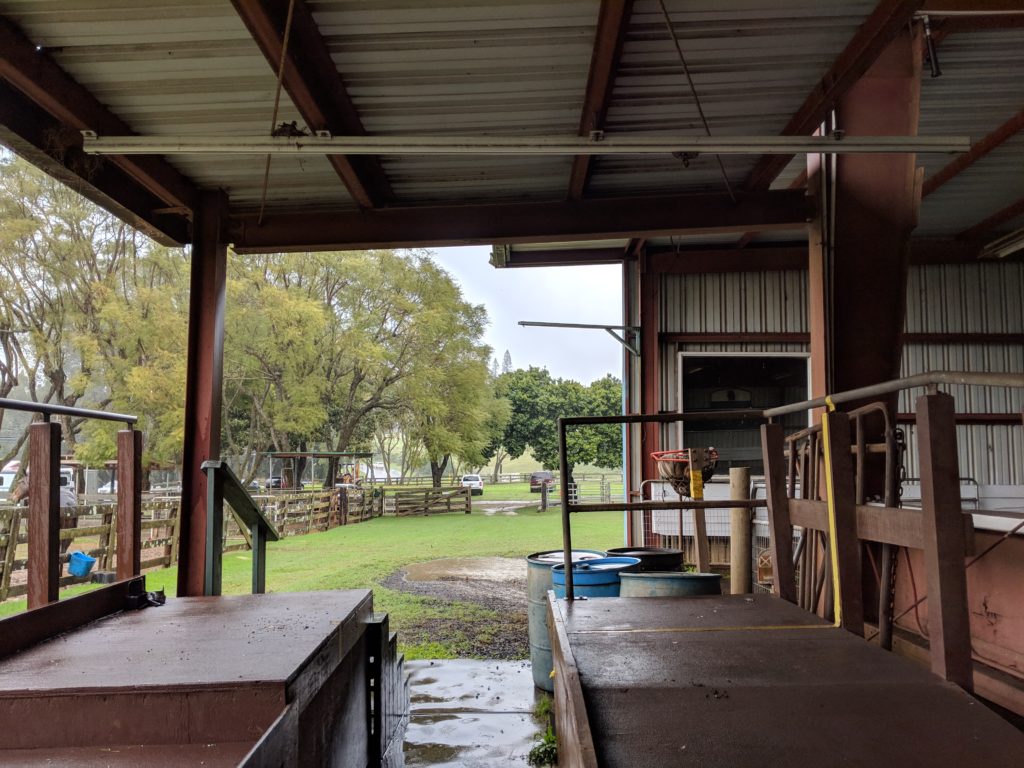
They ride in the covered arena or the outdoor arena. They said the outdoor one has the best footing of all the arenas – it’s stone dust, which drains well and doesn’t hold the rain and isn’t slippery afterward.

The judging booth and lift system and bathroom expansion and a bunch of other projects were done by a company that came out to work on a hotel on Maui – wherever they go they find a nonprofit to donate their time and skills to, and whole employee families come out to work. I thought that was so neat! This program has been so taken care of by special funding and things like this.
They also have a nice big roundpen with rubber panels on the lower half, which they used for some groundwork lessons and their veterans program. They say it’s been especially helping to teach kids what the canter is.
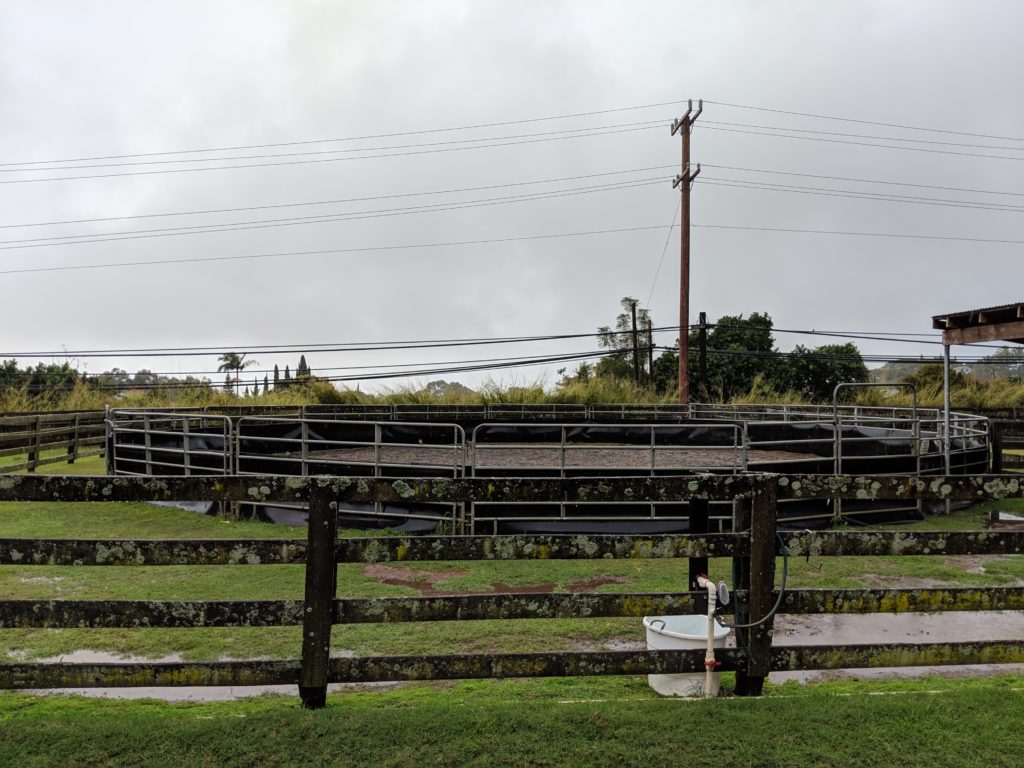
Veterans
They have a veterans program! Like most of us, they have shortened up their paperwork to seem less daunting, and something new to me that they do (that I love) is not require the veteran to fill out the paperwork first, but once they show interest they try to get the veteran to the barn as soon as possible, and during that first intake visit they fill out the paperwork WITH them (or even FOR them if they have trouble writing). They also get to meet the horses and groom and usually by then they are hooked. I really like that method because the paperwork seemed to be a big barrier at my program and an easy way out if someone’s on the fence about participating or not.
Props
Here are some interesting game props they have. I love these animal heads that hook over the fence and can be used to put rings! I bet it would be nice to have some in horse heads to also teach horse colors and markings.

These are nice red light green light props, and different rings.
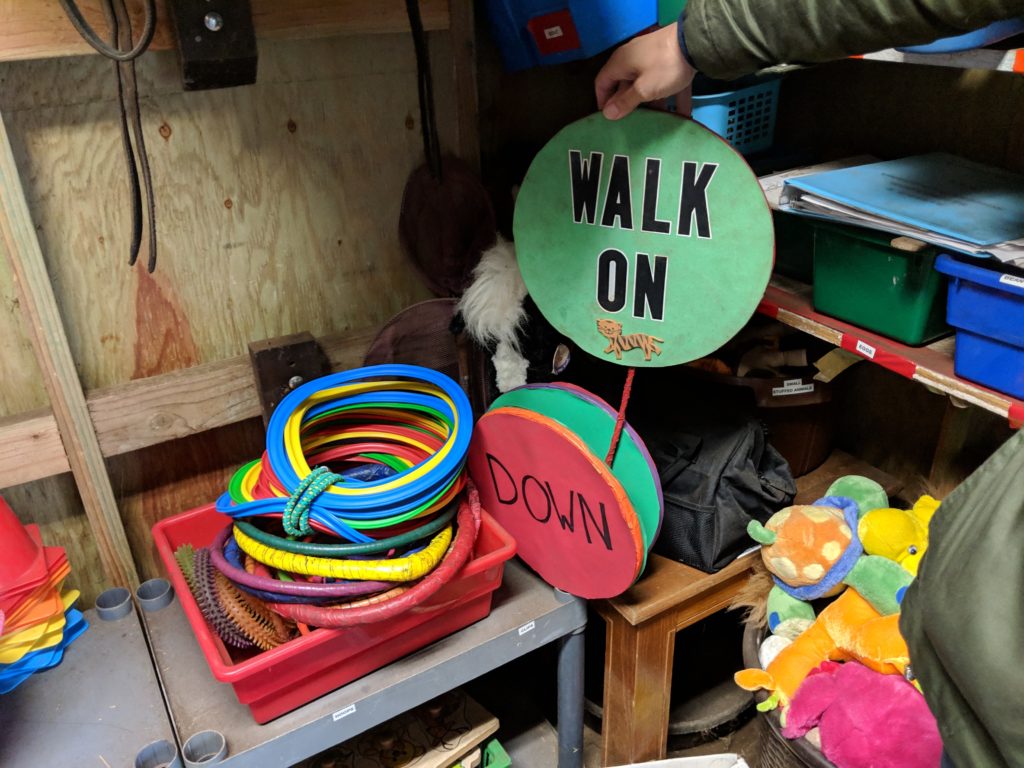
They like this poster to talk about horse parts on unmounted days. They put pieces of tape with horse parts written on them in the right places on the poster horse, and the rider then takes the tape from the poster and puts it on the real horse in the right place!
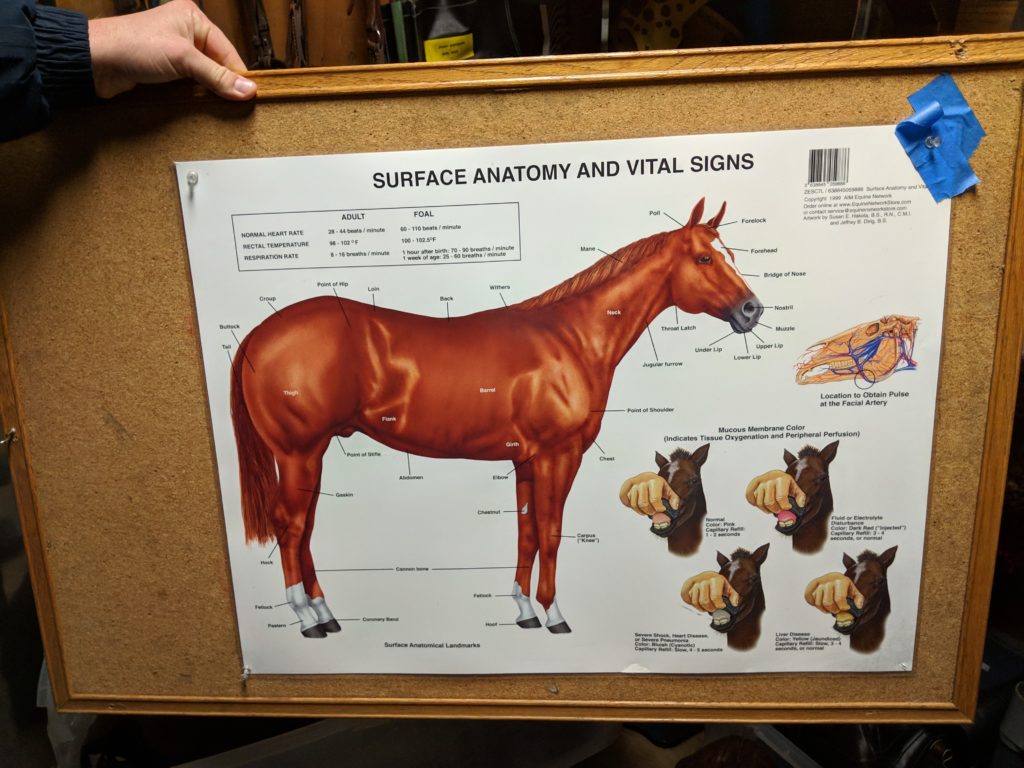
On the back of the tack room door (which is right by the arena) they had the volunteer sign in sheet and a place to put the arena set up, so volunteers can set it up without having to ask. (I love that idea).
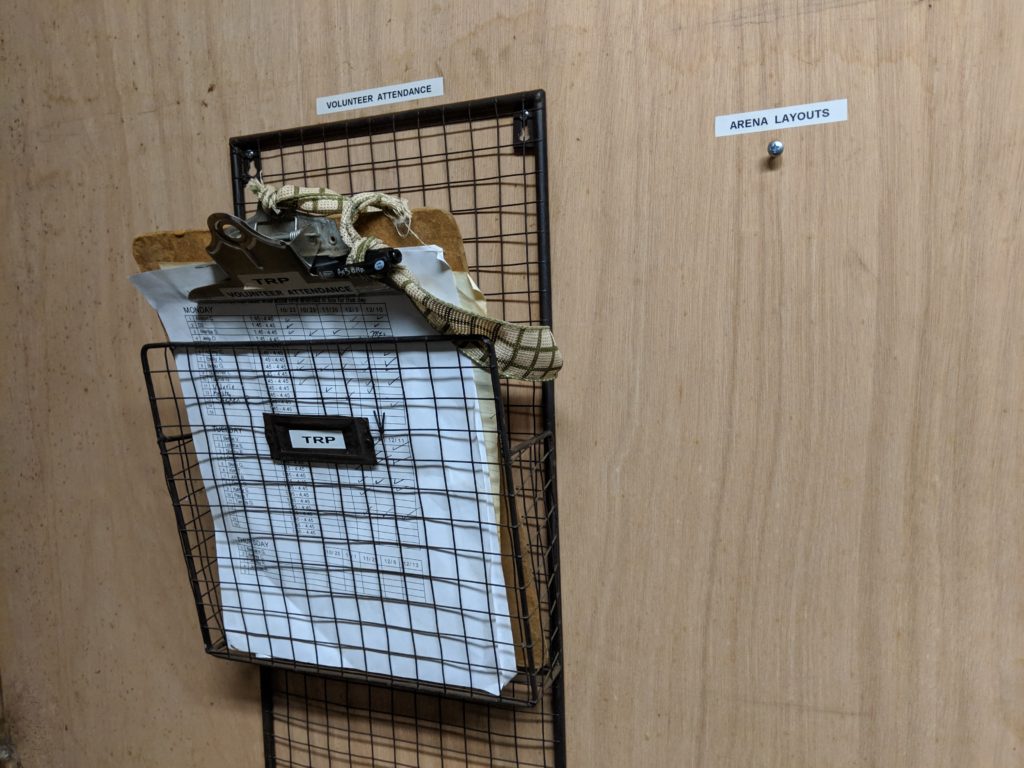
So far most paperwork for their program is on paper – volunteer sign in, progress notes, etc. But they are looking to change that. Stay tuned for my upcoming series on rider progress notes and tracking for ideas and to give your own suggestions!
They also have a separate stirrup chart. When they used to do 20 minute lessons they really had to be on top of stirrups being the right length before the lesson started, so this helped. I like this because it’s small enough you could even bring it out to the tacking area with you.
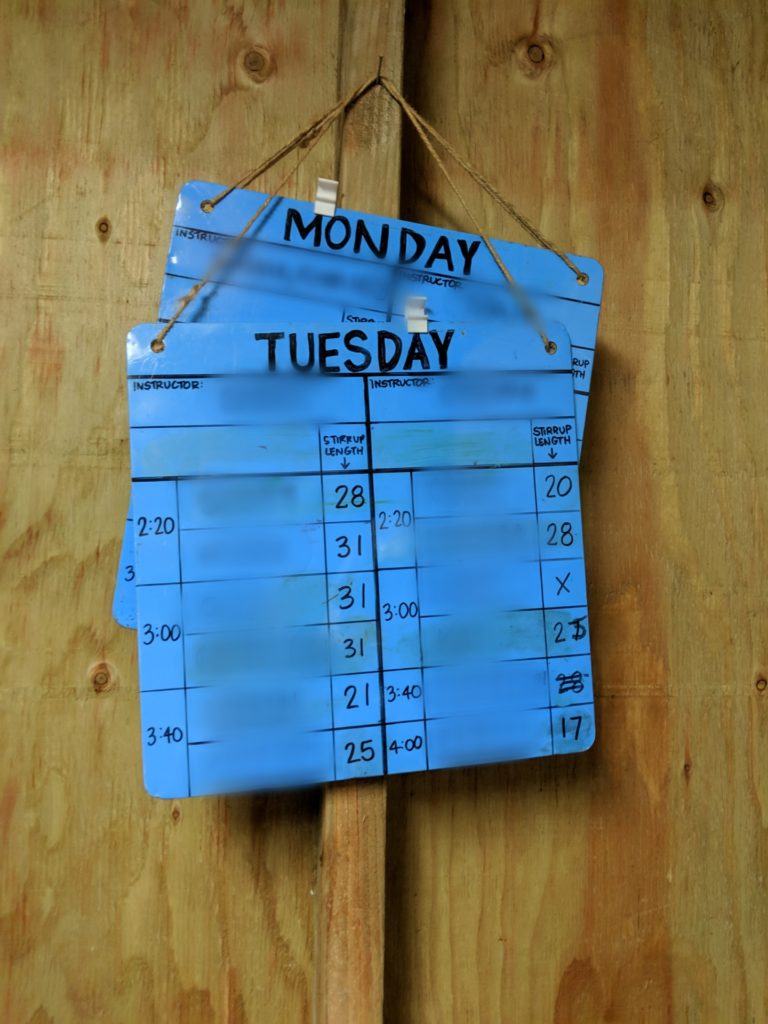
It seems that most barns have a “wall” of some sort, and this one has a wall of funny signs in the bathroom created by the barn’s General Manager, Robin Jensen, the master of “barn chic” who make sure that every season in the barn is festive and well-represented. I especially like the chickens one!
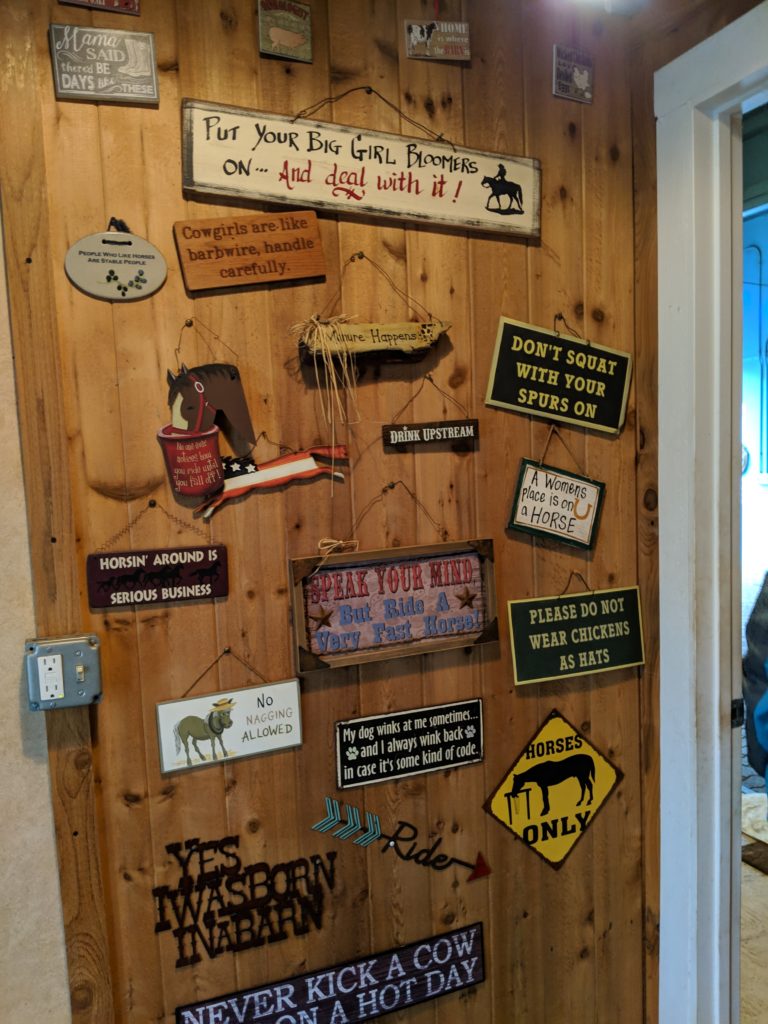
Conclusion
Thank you so much for letting me visit, ladies! I loved learning about your program and meeting you all, and I was so excited to hear that this website helped you all pass your certification a few years back. I wish you all the best with your program!
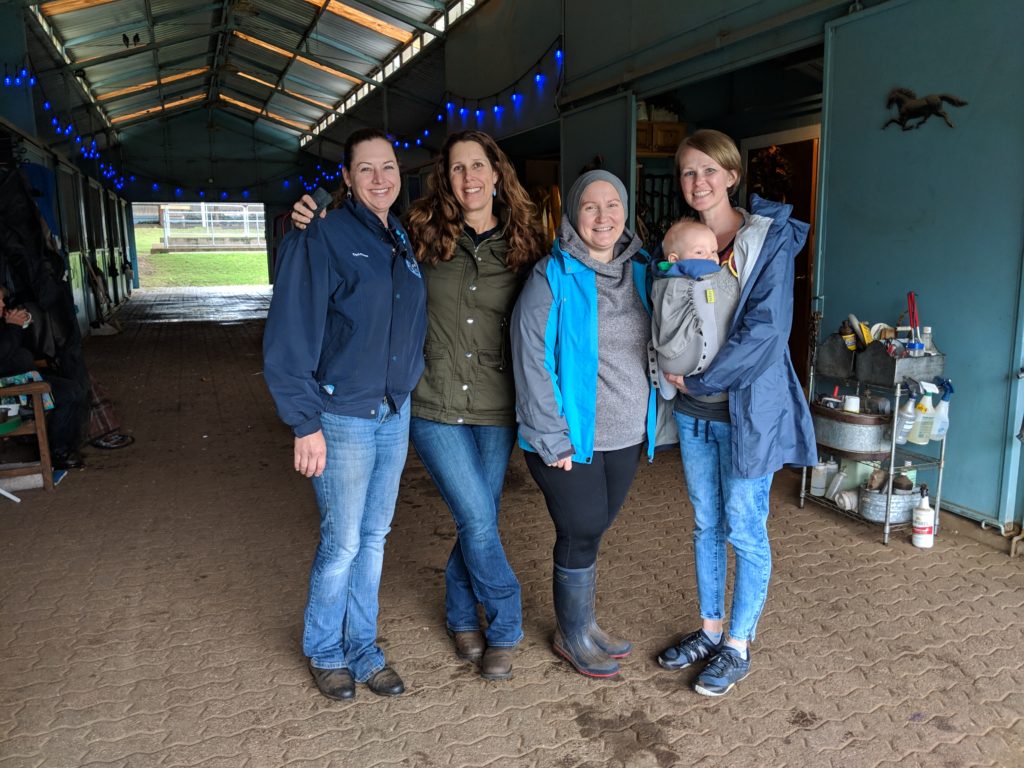
****************
Note: This is not professional advice, this is a blog. I am not liable for what you do with or how you use this information. The activities explained in this blog may not be fit for every rider, riding instructor, or riding center depending on their current condition and resources. Use your best personal judgement! If you would like to contribute an activity or article, please contact me here, I would love to hear from you!
What an amazing set up and group of dedicated people. Thanks for sharing your visit! (I also love the animal heads!!!) Thank you….